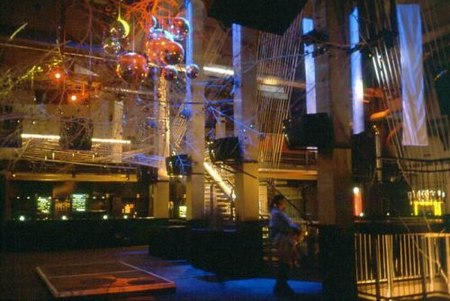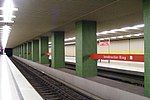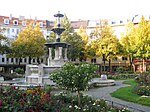KW – Das Heizkraftwerk
Buildings and structures in MunichCulture in MunichElectronic dance music venuesMusic venues in MunichNightclubs in Munich

KW – Das Heizkraftwerk was a nightclub in Munich, Germany from 1996 to 2003. The techno club belonged, besides the Tresor and E-Werk in Berlin, the Dorian Gray and Omen in Frankfurt, and the Munich-based clubs Ultraschall, Natraj Temple and Millennium, to the most renowned clubs of Germany's 1990s techno culture.
Excerpt from the Wikipedia article KW – Das Heizkraftwerk (License: CC BY-SA 3.0, Authors, Images).KW – Das Heizkraftwerk
Speicherstraße, Munich Berg am Laim
Geographical coordinates (GPS) Address Nearby Places Show on map
Geographical coordinates (GPS)
| Latitude | Longitude |
|---|---|
| N 48.123333333333 ° | E 11.608888888889 ° |
Address
WERK5
Speicherstraße
81671 Munich, Berg am Laim
Bavaria, Germany
Open on Google Maps










